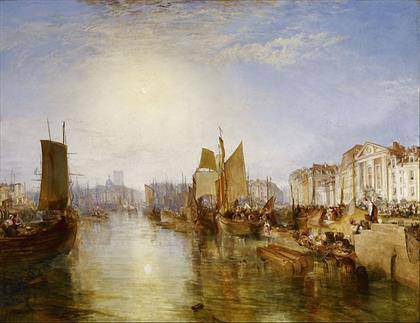
Julia Wachtel (b. 1956), “Membership”, 1984. Oil on canvas, 66 × 81 in. (167.6 × 205.7 cm). Whitney Museum of American Art, New York; purchase, with funds from the Painting and Sculpture Committee 2016.114 © Julia Wachtel; courtesy the artist and Elizabeth Dee New York. Digital Image © Whitney Museum, N.Y.
Painting from the 1980s at Whitney Museum ‘Fast Forward: Painting from the 1980s’ takes a focused look at painting from a decade associated with the arrival of new media and the rapid growth of the contemporary art world. January 27 – May 14, 2017.]]>
Source: Whitney Museum, New York
In the 1980s, painting recaptured the imagination of the contemporary art world against a backdrop of expansive change. During this explosive period, an unprecedented number of galleries appeared on the scene, particularly in downtown New York. New media, such as video and installation art, was on the rise and both museums and galleries presented an array of ambitious and provocative exhibitions. Yet, despite other mediums such as photography and video gaining traction, many artists actively embraced the medium of painting, exploring its bold physicality and unique capacity for expression and innovation.
The exhibition features work by artists often identified with the 1980s—Jean-Michel Basquiat, Sherrie Levine, David Salle, and Julian Schnabel—as well as work by a significant number of other celebrated painters (including Carlos Alfonzo, Ross Bleckner, Peter Cain, Louisa Chase, Robert Colescott, Moira Dryer, Eric Fischl, Leon Golub, Keith Haring, Joyce Pensato, Susan Rothenberg, Kenny Scharf, Julia Wachtel, Terry Winters, and Martin Wong). Often through exuberant work that engaged with the heroic gesture or pop imagery, these artists explored the traditions of figuration and history painting, and offered new interpretations of abstraction. Many addressed fundamental questions about art-making in their work, while others took on political issues including AIDS, feminism, gentrification, and war.
Despite painting having been declared dead, artists renegotiated their commitment to the medium in the 1980s, in the face of a media-saturated environment. The medium suddenly came to represent an important intersection between new ways of seeing and a seemingly traditional way of making art—one full of possibility and thriving as many artists actively re-imagined what painting could be.
Related content
Cory Arcangel’s digital art at the Whitney Museum (exhibition, 2011)
Follow us on:


